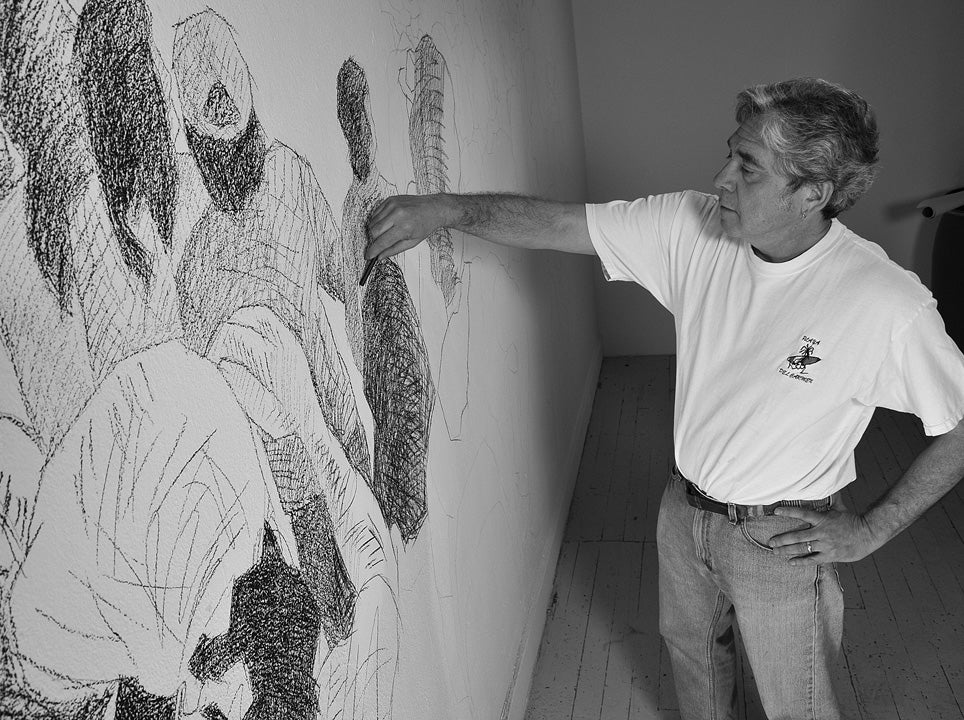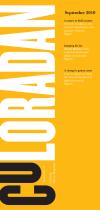
Barrio street scenes come alive through Tony Ortega’s (Span’80, MFA’95) use of bold yellows, blue-greens, orange, rust and hot pinks. The brown-bodied subjects with indefinable faces keep the focus on the everyday lives of indigenous Mestizo, Indian and Latino subjects and their environment.
“I paint what I know and what I see. People feel a distinct connection to the recognizable imagery,” Tony says about the shapes and landscapes he creates from recollections or imaginings. “It’s important to show the laborer picking the fruits and vegetables, not just the marketplace.”
As an artist and a professor at Regis University in Denver, Tony says art opened a new world he never imagined as a child. His successful artistic presentation of Chicano history, culture and experience brought him recognition in the 1999 Colorado Governor’s Award for Excellence in Art, the 1998 Denver Mayor’s Award for Excellence in Art and placement of his artwork in gallery collections nationally and internationally. He also appears in the Hall of Excellence at the CU Heritage Center.
Tony’s brightly colored oils and pastels reflect the connectedness of family, neighborhood, church, school and work. He achieves an emotional effect for his viewers through distortion, exaggeration and amplified designs of geometric shape.
Early childhood memories of watching his New Mexico grandmother sew quilts and his uncle work with wood shaped Tony’s interest in creating something of his own.
“I remember my kindergarten teacher holding up my drawing of a houseboat that looked like a face and showing off my work,” he reminisces.
Two semesters as an undergraduate in CU’s Study Abroad program in Jalapa and Monterrey, Mexico, helped him learn about his heritage. Rudolfo Garcia and Lillian Fernandez Robinson, the program coordinators, “gave me real world applications in Spanish and business,” Tony remembers.
Becoming a professional artist before returning to CU for graduate school gave him time to experiment and experience teaching in a classroom.
“It happened at the right time,” he says. “I needed a change in art, and in working on my terminal degree I got to know Dr. George Rivera.”
In collaboration with professor Rivera of art and art history, Tony illustrated three bilingual books geared for migrant children in Head Start programs. The first book, Who am I? ¿Quien Soy Yo?, published with campus financial support, tells Tony’s story through its character Pano, named after his son Ciprano.
“My lifelong goal is to contribute to a better understanding of cultural diversity through my art,” he states.
Photo courtesy Casey A. Cass






